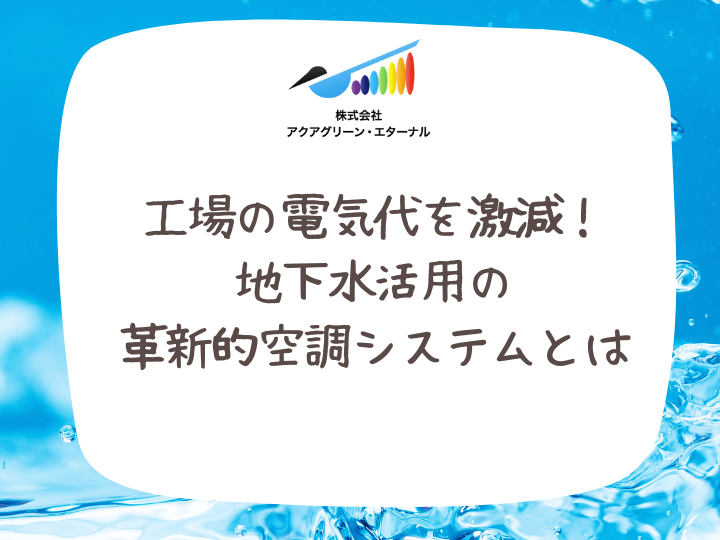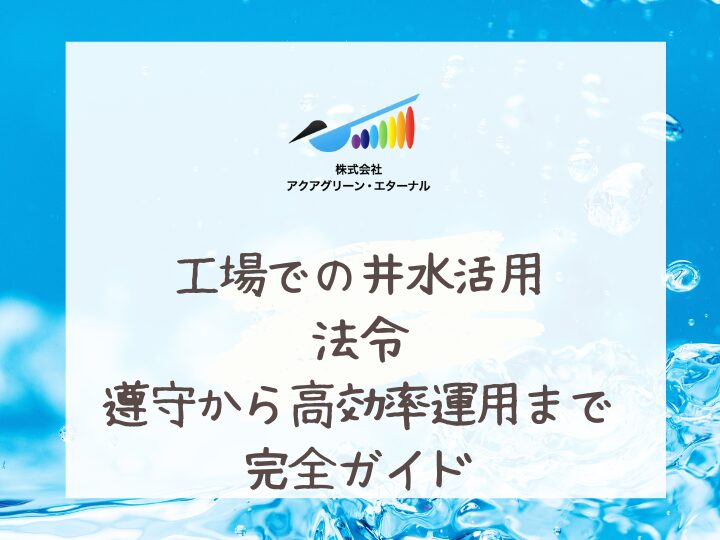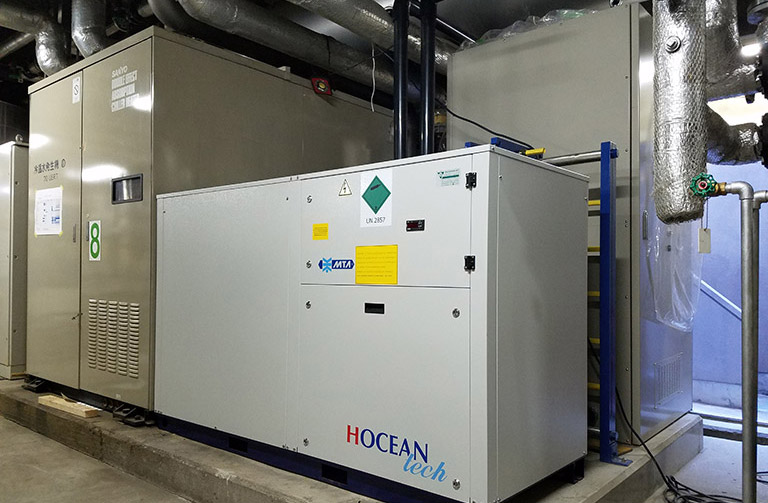Drastically reduce factory electricity bills! An innovative air conditioning system that uses groundwater
This article explains the efficiency and environmental performance of a groundwater-utilizing air conditioning system in a factory. It describes a heating and cooling strategy that takes advantage of the stability of groundwater temperature, operation optimization using AI and IoT, and the importance of life cycle assessment. It emphasizes the need to consider implementation from a long-term perspective and to consult with experts.

Understanding groundwater temperature characteristics: a thermodynamic approach
The stability of groundwater temperature is an interesting phenomenon that can be explained from a thermodynamic point of view. The temperature of shallow groundwater from the surface to a depth of 15-20 meters is almost equal to the annual average air temperature of the area. This is due to the fact that the Earth's large heat capacity means that the effects of daily temperature fluctuations do not reach deep into the earth.
Specifically, it is related to the thermal conductivity and specific heat capacity of the earth. Although the thermal conductivity of soil is higher than that of air, the specific heat capacity of rocks and water is also large, so temperature changes occur more slowly. Thermal diffusivity is an index that quantitatively expresses this characteristic. The smaller the thermal diffusivity α = λ / (ρ * c) (λ: thermal conductivity, ρ: density, c: specific heat), the slower the propagation of temperature changes.
Applying this principle to factory air conditioning systems makes it possible to achieve highly efficient temperature control. It is essential to take these thermodynamic characteristics into full consideration when designing a groundwater utilization system.
Summer groundwater cooling strategies: Optimizing energy efficiency
Optimizing the Energy Efficiency Ratio (EER) of groundwater cooling systems in summer is important because with conventional air conditioners the EER decreases as the outside temperature increases, but with groundwater systems this issue is mitigated.
For example, if the outside temperature is 35°C and the groundwater temperature is 15°C, assuming a heat exchange efficiency of 80%, the cold water temperature will be approximately 19°C. By utilizing this, it is possible to operate with a high efficiency of EER 5.0 or more compared to a normal air conditioner (EER 3.0 or so).
Furthermore, by pre-cooling groundwater using nighttime electricity, it is possible to contribute to reducing peak power demand. By combining this with a thermal storage system, it is possible to level out electricity demand and reduce operating costs at the same time.
Winter heating strategy using groundwater: Advances in heat pump technology
Utilizing the latest heat pump technology is key for winter groundwater heating systems. Compared to traditional air source heat pumps, groundwater based systems can maintain a stable coefficient of performance (COP) even at low outdoor temperatures.
By combining it with the latest inverter control, efficiency at partial loads is also significantly improved. For example, under conditions of an outside temperature of 0°C and a groundwater temperature of 15°C, it is possible to achieve a COP of 4.0 or more compared to a normal air source heat pump (COP of about 2.5).
Furthermore, by combining it with a floor heating system that directly utilizes groundwater heat, further efficiency improvements can be expected. Because it uses radiant heat, the perceived temperature is high, achieving both comfort and energy savings.
Optimizing Year-Round Operations: Leveraging AI and IoT
Advanced control using AI and IoT is effective in maximizing the efficiency of groundwater-utilizing air-conditioning systems. Big data such as weather data, factory operation schedules, and power supply and demand conditions are analyzed to predictively determine optimal operating patterns.
For example, machine learning algorithms can be used to learn optimal control parameters from past operating data, enabling operation that adapts to constantly changing environments. Furthermore, by utilizing real-time data from various sensors, instantaneous load fluctuations can be handled.
In intermediate seasons, further energy savings can be achieved by appropriately combining outdoor air use (free cooling) and groundwater use. Through these advanced controls, energy savings of 20 to 301 TP3T can be expected throughout the year.
Environmental considerations and long-term benefits: Life cycle assessment
To accurately evaluate the environmental performance of groundwater utilization air conditioning systems, it is important to consider the perspective of life cycle assessment (LCA). It is necessary to consider not only the initial investment and operating costs, but also the CO2 emissions and environmental impact throughout the entire life cycle, from procurement of raw materials to disposal.
For example, the environmental impact of manufacturing and installing pumps to draw up groundwater cannot be ignored. However, in the long term, it is possible to reduce total CO2 emissions by more than 501 TP3T compared to conventional systems. In particular, further improvements in environmental performance can be expected when combined with renewable energy.
Appropriate use of groundwater also has a positive impact on the local water cycle. Pumping up water and treating it appropriately before returning it underground can contribute to sustainable water resource management. However, it is essential to thoroughly investigate the local geological conditions and hydrological characteristics and establish a long-term monitoring system.
We recommend that factory managers and managers evaluate groundwater utilization air conditioning systems from such multifaceted perspectives and consider their introduction. It is important to make decisions from a long-term perspective, such as not only initial investment and operating costs, but also contributions to the environment and improvement of corporate value. The key to success will be to develop optimal system designs and operation plans through thorough discussions with experts.


